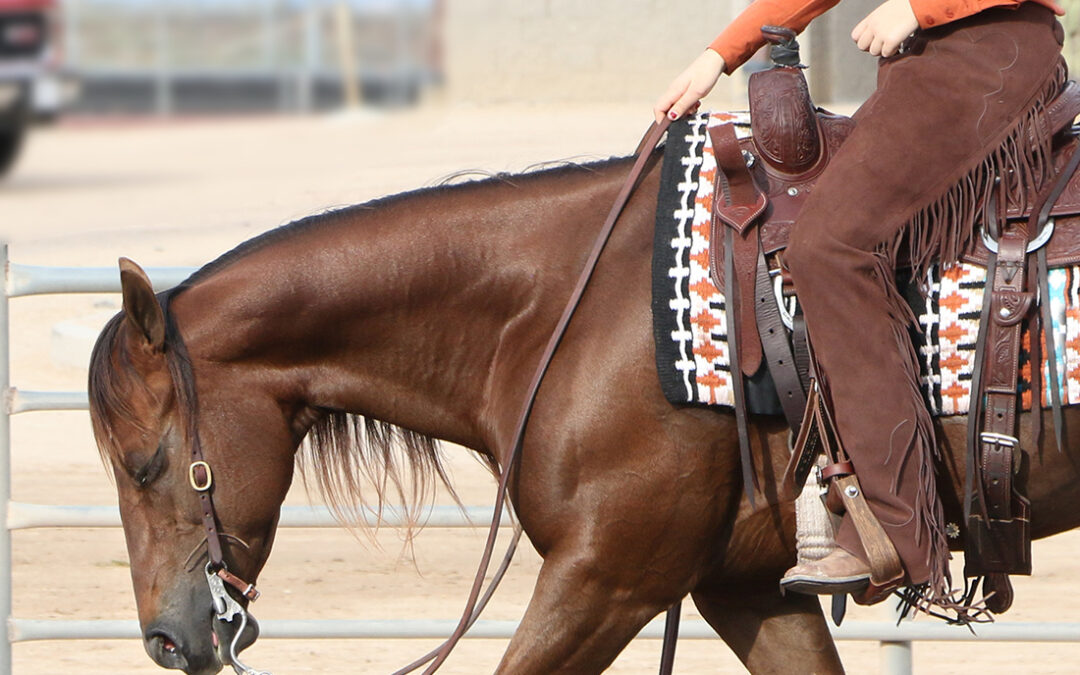As riders we strive to become better and to understand how to ride, to develop a proper and good relationship with our horses. Being good and mindful with your hands is one way to either build that relationship or hurt it. These are some tips to establish a great relationship with your horse through your hands.
First you must realize you can take ahold of your horses face. But also realize that how you approach him with your hands is equal to how you would speak to a person. If your approach is sharp, jerky or rough you have “yelled” at him with your hands and he may be on the defensive. The biggest thing you can do to change his response is to change your approach to him. Here are some secrets to good hands.
The “pick up” consists of several parts. The “pick up” is what I call the action of when you connect with his mouth, using your hands. How you perform your pickup is directly related to how good of hands you have. I encourage you to strive to study and learn these techniques. The three components of the pick up are:
- Your approach
- The Connection
- The release
- Your Approach– This is such an important part, as it is the start of your communication with your horse with your hands. Do your best to make sure initial contact is smooth and fair. Don’t come in with a rough or rigid jerk. I teach my riders that it is ok to bump or correct your horse in the face as long as you are in contact. If you jerk or bump with no warning “out of mid air” so to speak you will scare your horse and teach him to brace against your hands. When you pick up on the reins just draw up smooth and slow until you are in contact with his mouth then make any corrections as needed.
- The Connection– Once you’ve made contact with your horses mouth you now have to make the decision if you need to pull or bump your horse in the face or simply just hold him. This is where feel comes into play. Do your best to “feel” with your hands what your horse is doing at the end of the bridle reins. Which leads me to make a point to you. If your horse is ever pulling the reins out of your hands, be is basically controlling your pull or pickup. This can reinforce the very bad habit of a horse throwing his head. By allowing him to pull the reins out of your hands you are giving him a positive reward for his negative behavior. Which will make him do it even more and more. Make sure you are mindful about your hold on the reins and don’t let those reins slide through your hands! Don’t give your horse any stronger correction than is needed to get the desired response. Remember the pounds of pressure that you use to pull or bump on your horse is intensified or magnified when you use a shank bridle to the degree of severity of the bit. If you are in a snaffle it is close to the same pounds of pressure as you actually apply with your hands. So ride very mindful of this and don’t add any more pressure than you need. That will develop trust in your horse. Also make sure you give a clear message. Riding this way will take a lot of focus and for myself I have found that if I am really working on a horse I have to limit my outside distractions or I may get heavy handed and lose the feel I am trying to develop. You are building a relationship with your horse so be a fair partner.
Follow through is another important component of this phase of the pick up. Follow through is nothing more than asking until you get a response.
This also requires feel and awareness. It means to stay in or follow through until you are satisfied with the amount your horse gives. Be clear and give a clear message and your horse will learn faster. I look for my horse to give in the face but also to soften or lighten in my hands. Then I know I’m ready to release.
- The release– Once you are satisfied with your horse and the amount that he gave, then you want to release or give back to him with your hands. I like to release in a smooth slow motion. I also want to recommend that when you release, you are truly released. Make sure you give enough rein so that the pressure(or contact) changed enough so that he truly felt the release. The release is his reward. Horses learn by that reward and they look for the reward so make your message clear and make sure he realizes that he is being rewarded.
I’ve just given you a lesson on how to use your hands more effectively. If you study that and put it to practice you will start seeing some good results with all the horses that you ride.
Also a word of warning. As in all the horses that you ride, if, when you are in contact with their face they show any signs of wanting to rear or becoming dangerous stop what you are doing and get the help of a professional.
Building a good relationship with your horse is worth the effort. Our hands are one of, if not the main method of communication we use when we ride, so learning to use your hands fairly and effectively is a very valuable use of your time. Good luck to you and your horse!

